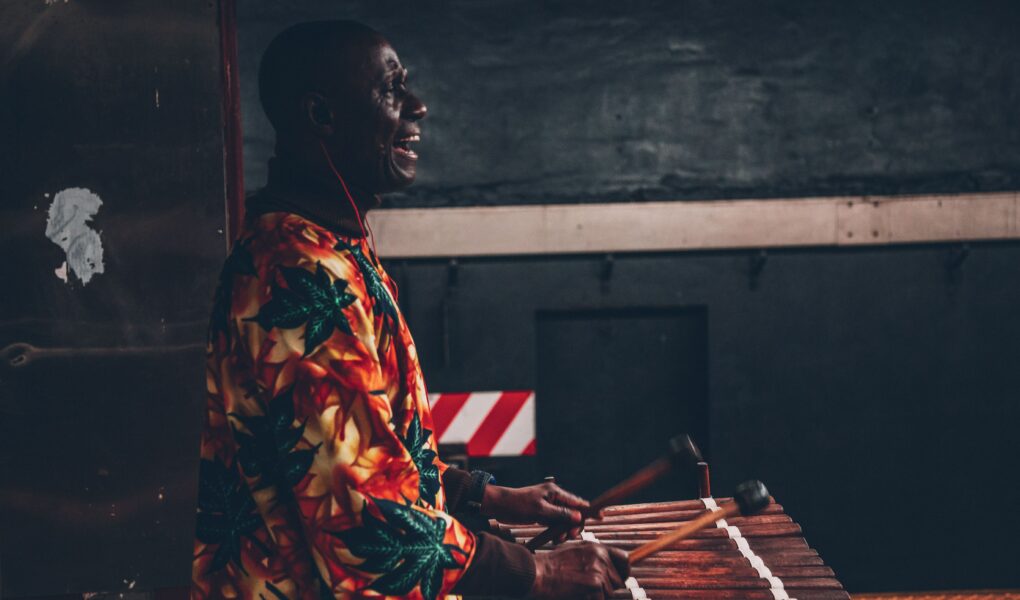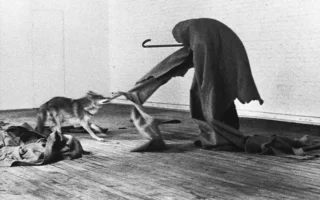Learning and living in the kraal of a South African shaman
Author: Hella Schwerla
Life leads the author Hella Schwerla to a Sangoma shaman who invites her to his kraal in a South African village. She accepts the invitation without suspecting that this stay will change her life completely. She honestly reports on her experiences with the sangoma and the challenges, be it the heat or the intense spiritual experiences, and gives a direct impression of the work of the sangoma from the perspective of a rather skeptical European.
Turn your face to the sun and the shadows will fall behind you.
– Proverb from South Africa
As a child, she had a strong spiritual connection beyond the Catholic Church. Barely escaping the confines of the village by running away, as a girl she enjoyed free thinking and feeling in England, especially in Swinging London, through the charm of the southern French countryside, and in Paris.
As a young journalist, she made a name for herself through her talent for tackling posed topics not only through good research and interviews, but above all by living with, exploring, involving with the people who were the content of her work. Everything that could not be proven was labeled superstition by her.
Even when she had spiritual experiences – for example, when deceased people appeared to her – she dismissed them as nightmares and nonsense. So by the early 1980s, she went to the first meetings of healers, shamans and spiritual leaders to objectively observe and describe the incipient esoteric boom.
During these years she realized more and more that there is no objective journalism, but that the writer always uses his subjective impressions.
THE SHAMAN CONGRESS IN MONDSEE
Two years before the turn of the millennium, the congress took place at Mondsee in Austria. It was assigned a sangoma from South Africa, Jambolane Mpapane, and his translator Ngwenya. Colorful traditional robes, goat skins on the body and head, feather ornaments everywhere. Shy faces, awkward at first. They were not used to the hustle and bustle. Mpapane spoke only Swazi, Ngwenya translated into English.
The Sangoma, as many shamans from Africa are called, lived with his tribe in the border triangle of South Africa, Mozambique and Swaziland. When the two Africans were introduced to their caregiver, they smiled for the first time. There was trust and sympathy on both sides.
She accompanied the two to the seminars, where the participants, all of whom were white, asked questions thirsting for knowledge. On the last evening before the return flight, she asked him why he had actually taken the long journey. “It was a dream,” he replied. After the scouts who had found the tribe had made him the offer, he said, he had only accepted after that dream:
I dreamed a huge silver bird flew over a great sea to a land in the mountains. There I met the savior of my people.
Then he looked at her for a long time. She laughed heartily and said that he must have been mistaken, for she did not have the gift of saving nations. She already had enough to do with saving herself.
The Sangoma was silent for a long time and then said firmly, “You will come to us. It may take time, but I will see you in my kraal.” Ngwenya, the translator, emphasized that this was an invitation and that he would wait for them.
This then really lasted for a few more years, during which she would receive a letter now and then in which he repeated the invitation. These letters were on the road for months before they arrived in Germany.
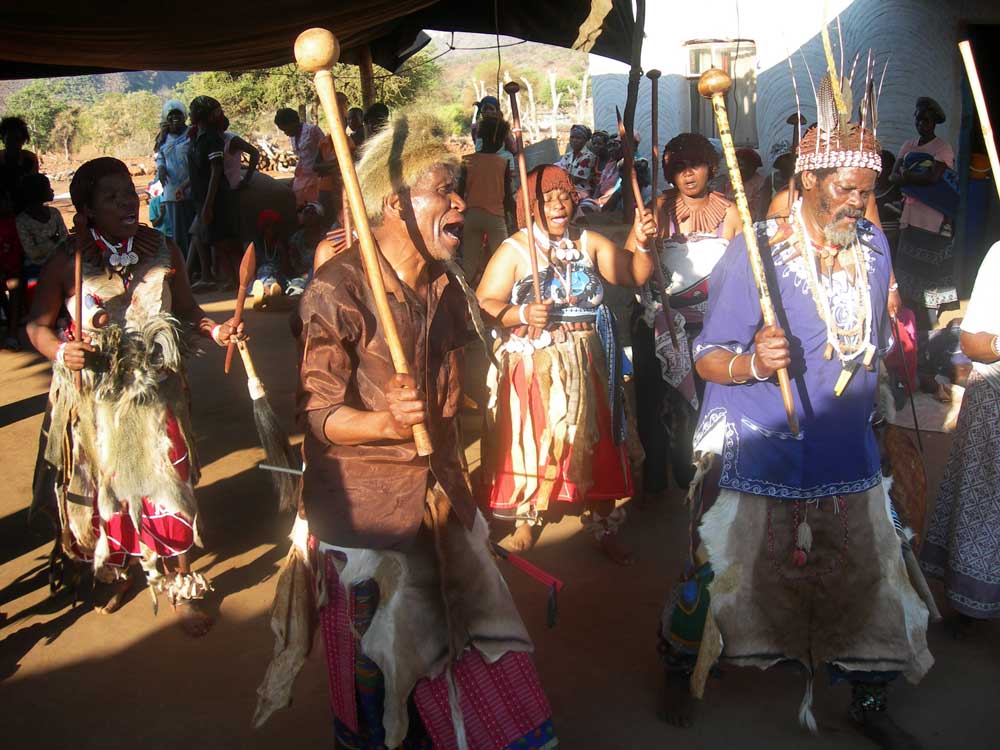
Inititation
Shortly before the turn of the millennium, the order situation was bad for her as a freelance writer, a painful separation not yet overcome.
And so she decided to embark on the journey to Africa, to dare a completely different adventure, even though she was already well past 50.
The first weeks in the kraal of the Sangoma were limbo. 40 to 50 degrees in the shade, with no shade at all. A hut with a roof made of corrugated iron. Mpapane hardly got to see her, the promised translator was not there. Only hissing sounds that she did not understand. No car, no cell phone reception, no electric light, dirt, a single toilet for the whole tribe. She had to look for food in the fields. Pure desperation, flight reflexes and no chance to escape in no man’s land.
After a few weeks she discovered two women in the tribe who understood some English, but didn’t get a chance to speak to the Sangoma. She had hoped to accompany him on his trips to see clients, to learn something. When he was gone, he sent word that she now had to represent him in the kraal.
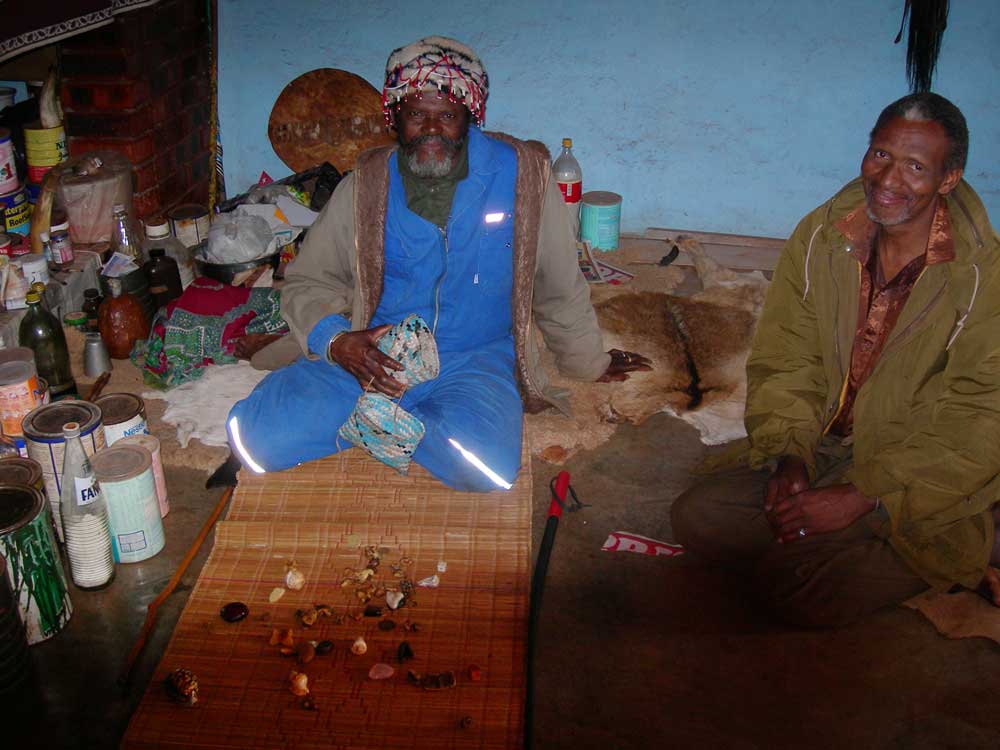
Bone Oracle
Then, with the help of one of the women, she managed to organize a car after hours of walking in the heat to get food in a small town. A five-hour drive on an overloaded pickup truck. A white Burin she met while shopping invited her to join her, and she drove with her to the sea for a week.
That she returned afterward was because she knew that the kraal, the tribe, the sangoma were the right challenges for her to learn, that she had trials to pass.
When she was back in the kraal, the external conditions were the same, but her inner attitude had changed. By now Ngwenya, the translator, had arrived, she began to experience the people, the kraal, the sangoma with different senses. She now belonged to them, became part of the family.
A FEAST IN HONOR OF HER RETURN
A feast was held in her honor upon her return, and then, when Janette, the white burin, came to visit, she experienced the Sangoma for the first time in his element, bone throwing:
He devoutly spreads a special blue gold-interwoven cloth on the floor and sits with us. He closes his eyes for a few minutes and whistles softly to himself. Ngwenya whispers that he is calling the ancestors and the spirits, especially the water spirit, with whom he has a particularly good relationship. Then Jambolane takes all the objects and throws them on the blue cloth. I see there small and larger bones, whether of animal or human I do not recognize. There are also stones and shells in all sizes, mine with the pearl is also there, shards, a colorful mess. Very briefly my stomach rebels, envy wants to arise, because for me he has not done that in the whole time. But then I am simply happy to be able to be there.
Jambolane looks long and thoughtfully at the spread out objects and then says what the spirits transmitted to him. Jannette has not been happy for a long time, but it is up to her to be free. That she should not drink so much alcohol. Her life would change, and for this the Great Spirit had sent me. She had the strength to do it. She had a good heart, a beautiful soul, and they were very grateful to her for what she had done for her fellow black people. But now she had to do more for herself and her health.
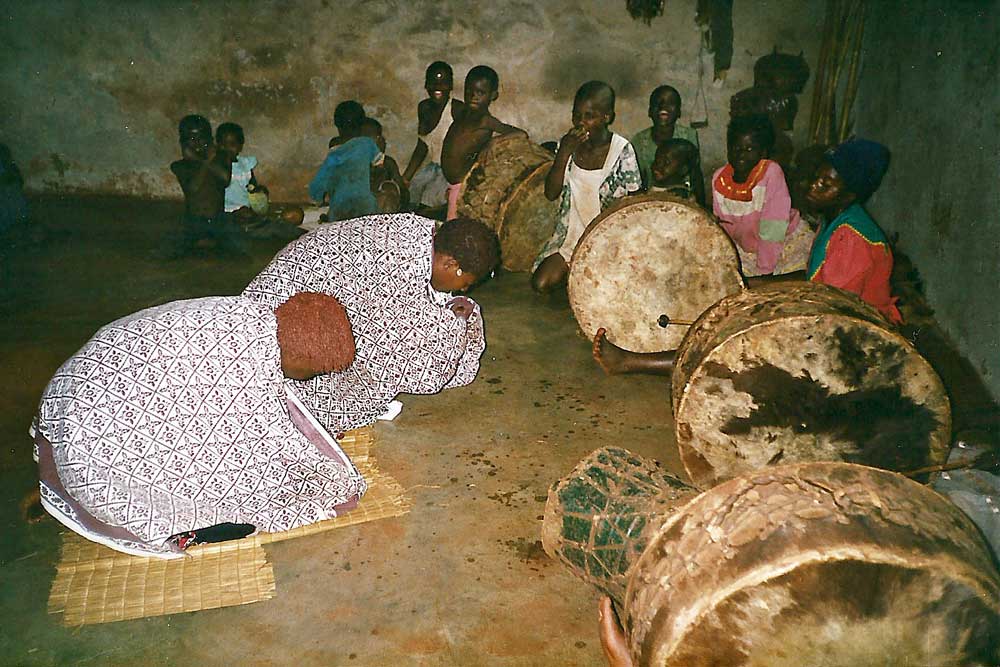
Drum room with Sangoma students
Little by little, she grasped the daily rituals. The women went about their hard work in the fields, the sangoma sometimes received them. He trained new sangomas, who lived closely packed together in the huts with their hair dyed red, kept to themselves and had almost nothing to eat but herbs, which they regurgitated as foam.
In the evening, the students gathered with the women and children in the drum room, danced, prayed. The sangoma entered the room. His oldest women were sangomas and threw the bones at clients in the drum room, prescribed herbs.
One of the women, Thoko, called her Cleopatra because she was so beautiful. She became her most important friend during that time. The latter quickly learned better English, she a few phrases of Swazi.
Weeks later, when she had long since given up hope, Ngwenya told her:
That she returned afterwards was out of the certainty that the kraal, the tribe, the sangoma were the right challenges to learn, that she had trials to pass.
Hella Schwerla – Heat, Dirt & Enlightenment
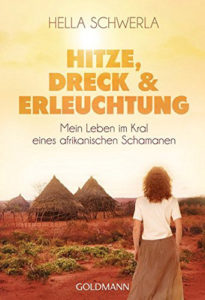 The book “Hitze, Dreck und Erleuchtung” (from which the passages indented in the text are taken) is out of print. The author still has a small stock for sale privately – if desired also with dedication. As before, the proceeds will go to the still large family of the late Sangoma Jambolane Mpapane.
The book “Hitze, Dreck und Erleuchtung” (from which the passages indented in the text are taken) is out of print. The author still has a small stock for sale privately – if desired also with dedication. As before, the proceeds will go to the still large family of the late Sangoma Jambolane Mpapane.
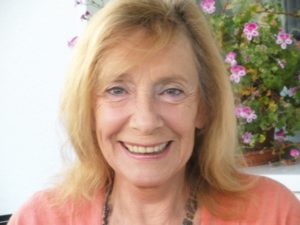 About the author
About the author
Hella Schwerla, born and raised in Emsland, has lived in Munich for decades. She trained as a journalist and worked for daily newspapers and magazines. She made a name for herself as an author of features, radio plays, film and television, children’s books and non-fiction. Novels include: “Witches Can Cry Too”, “Heat, Dirt & Enlightenment”. Psychology and energy work. Many stays abroad, among others in America, South America, Africa and India. One adult son, one grandson, Tara, the four-legged friend, the very big late love and a handful of very good friends.
This article appeared originally on the German Homepage of Tattva Viveka: Die weiße Sangoma

